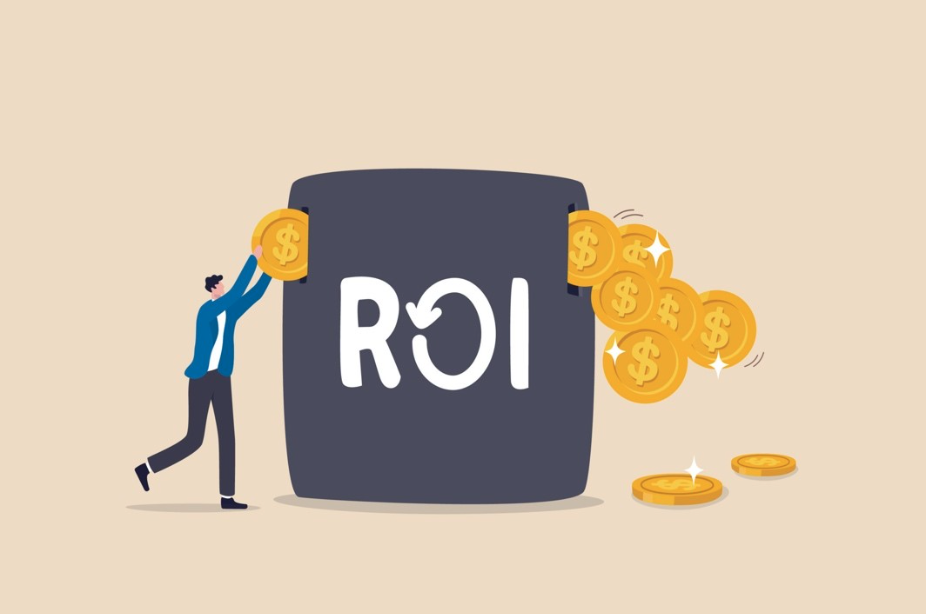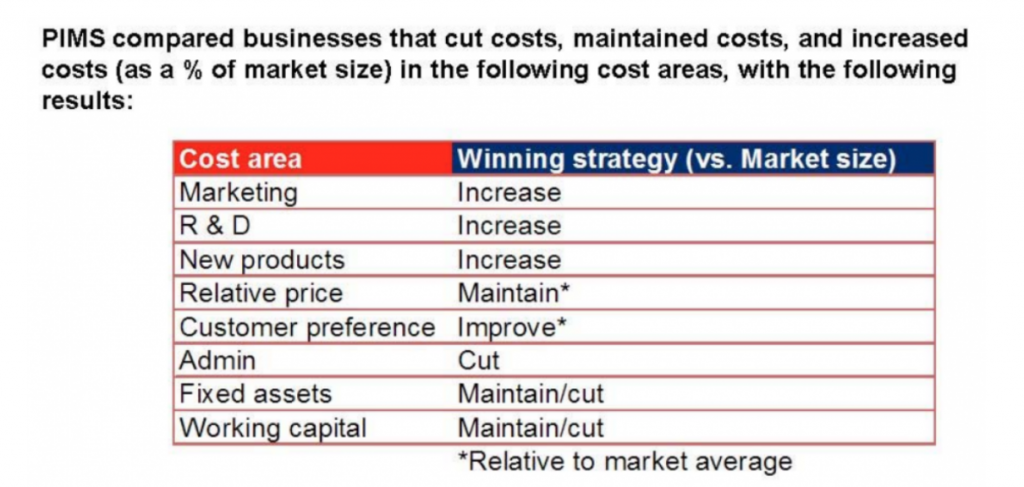You listen to the dreaded words from the news reporter on the screen of your TV, “Economists are predicting a major economic downturn in the next 3 months and…”
You sigh and shake your head, thinking about how it will impact your business.
Cut costs. Reducing your workforce. Putting a hold on marketing.
Wait.
Putting a hold on marketing?
Stop. Right. There. You could be doing more damage than good. And so arises the big question, and the point of this article; investing in marketing when times are good versus when times are bad.
Should you invest in marketing when times are bad? What about when times are good? What are all of the reasons that you should or shouldn’t do this?
In this article, we explore this exact question, so that the next time you hear that same news report line, you can act with confidence, strength, and effectiveness. In particular, we’ll be covering:
Is your marketing a profit centre or a cost centre?

A lot of how you react to marketing during any time is whether you see marketing as a profit centre to grow business or a necessary evil cost centre that you need to scale back.
Marketing is, above all else, an investment in the future of your business. It is a habit you need to build. Businesses that see marketing as a cost centre pull back when times are great AND look to cut costs when times are bad.
Oftentimes when a downturn does happen, businesses begin cutting back spending and investment in general, and although we should look at improving efficiencies there have been several studies going back a century that indicate it’s better to maintain, if not increase marketing spend during a recession.
The historical evidence around investing during a downturn
In the 1920s, Post was leader in cereal, but during the Depression, Kellogg’s doubled its ad spend and grew profits by 30% as the world emerged out of the recession.
What about Post now? Well, when was the last time you found Post cereal on an Australian shelf? Pizza Hut and Taco Bell did the exact same thing to McDonald’s in the 90s and Amazon did the same thing to the market in 2009.
Those brands that maintained or grew spend, increased sales and market share during the recession and were significantly better placed when the economy recovered.
And that’s because competition goes down. The noise levels in the category drop as your competitors back off.
In 2008, the IPA Bellwether Report stated, “If other brands are cutting budgets, “the longer term benefit of maintaining share of voice “at or above share of market will be even greater.” They go on to mention three key areas where it’s actually advisable to increase spend, which are: Marketing Communication, Research & development and New product development.

The importance of better attribution towards making Marketing a profit centre
A main reason why most businesses don’t view marketing as a profit centre or investment is they simply don’t accurately attribute real revenue success to marketing activities.
When a deal is closed or a product is sold, how do you know what specific marketing activity lead to its success? For example, you’ve published 20 blogs and have been posting consistently on social media with some advertising on Facebook, Instagram and Google sprinkled in. You just closed a deal. How do you even know if any of the marketing efforts led to this closed deal?
Therefore, when you can’t accurately attribute real revenue success to marketing activities, it becomes difficult to perceive marketing as an investment because the only real data we have is what we can see on the accounting balance sheet, and so, we conclude that marketing is an expense, despite its likely impact on our revenue growth.
If marketing attribution is the solution, the obvious next question is how does a business demonstrate marketing effort impact?
The answer is marketing automation tools. At RedPandas, we use HubSpot to track all business activities so that we can see COMPLETE visibility around how every specific marketing activity is impacting our bottom line, and this allows us to view marketing as an investment as opposed to a cost.
It’s because of HubSpot, we’re able to create the following report for our clients where for a specific time period we can see the EXACT ROI for an article or webinar. In the below example we can see one particular webinar resulted in $38,000 of closed deals:

If you’re interested in this type of powerhouse marketing attribution check out our How to Measure ROI from content article. Additionally, check out this article on What HubSpot is.

Once you can measure the success of your marketing activities and clearly link them to business revenue generated, you begin the process for transforming marketing from an expense to an investment.
The next thing you need to do is consistently engage in marketing activities. Produce blog articles at a regular cadence. Post on social media frequently. Invest in social media marketing. Having measurement frameworks in place to measure ROI is fantastic, but what’s just as important is actually producing content so that you have something to measure.
To recap, marketing CAN absolutely be an investment for your business, if you:
- Change your perception around marketing
- Accurately measure ROI from your marketing activities with a powerful measurement framework
- Consistently engage in marketing activities for your business
Investing in marketing when times are good
What about investing when times are good? Sometimes companies rest on their laurels because times are good, and then they sit back and forget what it’s like to fight for deals. This is sometimes referred to as the pride cycle: when times are tough, you work hard to dig yourself out of the hole, through hard work, and then things eventually get easier. So, you take your foot off the gas and start coasting. Before you know it, you’ve lost your momentum and are headed back toward struggle.
But understanding just like Winter comes after Summer, business is a cycle and if you can’t invest when you have disposable cash flow it’s a much tougher pill to swallow when times are tough.
Although global pandemic events like the dreaded C-word are beyond our control, ups and downs are part of business. Using these times to experiment what works and develop good marketing habits is an opportunity and will put you leagues ahead of the competition when the inevitable Winter comes back around.
So, what does this mean for me?
If growing your business is something that you care about, then shifting your perception around marketing from an cost centre expense to a profit centre investment is a first big step to positive business growth.
Once you can see this, it’s important to then implement measurement frameworks to accurately measure ROI from your marketing activities and engage consistently in marketing activities.
Still need some guidance?
We’re happy to help you implement a measurement framework and/or teach you how to implement consistent and effective marketing activities for your business.
If you’re interested in implementing a measurement framework for your business, check out this page about using HubSpot for your business.
If you’re interested in learning how to consistently utilise effective marketing activities for your business, first read this page about the system we recommend called They Ask You Answer and then, if it’s for you, get in touch with us here.












